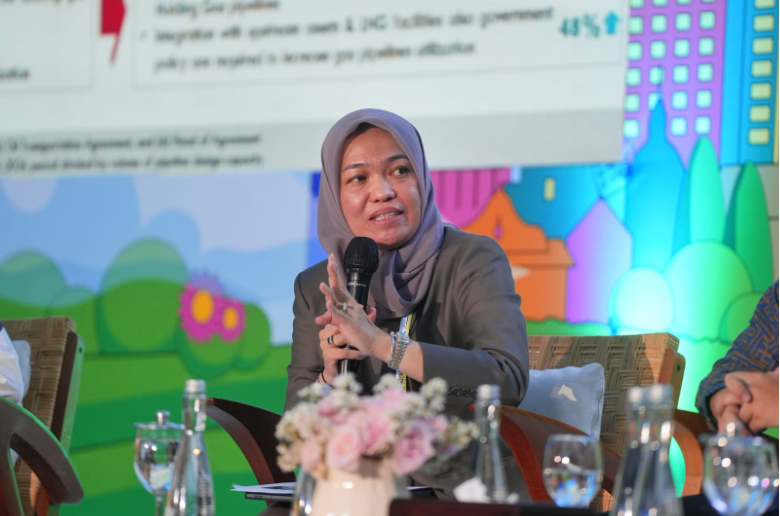Kembali Ke Beranda
15 Mei 2024
PGN Combines Integration and Aggregation Strategies for Optimizing Domestic Natural Gas Utilization During the Energy Transition
Jakarta – The availability and accessibility of energy play a key role in PGN’s, Pertamina's Subholding Gas, efforts as a leading player in Indonesia's gas ecosystem. With its extensive natural gas infrastructure network and the ability to utilize beyond pipeline gas, PGN aims to ensure that all demand regions are adequately supplied with gas.
“We view the energy trilemma in alignment with the 4A+1S principle. In the long term, PGN achieves this through integration and aggregation. Integration of PGN’s existing infrastructure will be aligned with Pertamina’s resources, which also serve as customers,” explained PGN’s Director of Strategy and Business Development, Rosa Permata Sari, during the Energy & Economic Outlook Gasfest 2024 on May 14, 2024.
Since 2021, PGN has recognized that the fragmented pipeline network is no longer sufficient to support energy independence. “What is needed is integration,” Rosa emphasized.
By leveraging the capacity of existing infrastructure, PGN sees a potential 14% increase in gas utilization. If PGN integrates with new wells, refineries, and petrochemical facilities, it could boost utilization by up to 48%. Hence, shifting from a fragmented to an integrated infrastructure is crucial, not just for PGN’s business interests but for national goals.
“Utilizing domestic natural gas will rise through the synergy of aligning national gas utilization plans, working together with PGN and all stakeholders, regulators, and downstream customers who will receive full support from the government. The infrastructure will eventually be connected to both potential and existing customers, ensuring performance and promoting new customer growth. We expect that by 2030, supply and demand will reach balance,” said Rosa.
According to SKK Migas projections, gas production will continue to increase, with major projects underway in the North, as well as new giant gas discoveries in Aceh and Andaman. However, integrated infrastructure remains a challenge, and PGN’s role as the largest gas infrastructure manager in Indonesia is crucial.
With increased gas utilization, natural gas will play an even better role in the energy ecosystem, especially as a transition fuel towards renewable energy sources. PGN, in collaboration with Pertamina as the holding company, is preparing the General Gas Supply Plan.
“We have mapped the gas balance, supply, and demand conditions, and identified how existing infrastructure can be utilized to meet demand in cities, industrial areas, and transportation through CNG and maritime transport,” explained Rosa.
In terms of gas pipeline infrastructure, PGN requires two key pipelines: the Cirebon-Semarang Stage 2 and Dumai-Sei Mangkei pipelines. Once connected, PGN will gain flexibility over several projected sources that will meet the gas needs. “For example, if PGN can secure new gas supplies from Mubadala, we could bring gas from Aceh to parts of Central Sumatra. From there, gas could be transported to West Java. Then, once the Cisem Stage 2 pipeline is completed, we will have supply flexibility from East Java to West Java,” Rosa elaborated.
For Eastern Indonesia, PGN sees the need for better logistics scheming, including shipping, to support the sustainable energy transition.
“This doesn’t dismiss the importance of strategic partnerships, such as with PLN and refinery customers, identified in our gas supply plans. We believe that through integration and aggregation, the outcome will be optimal. By integrating existing infrastructure, we can aggregate the commodity, resulting in more competitive landing prices for customers,” Rosa concluded.
Currently, natural gas is already competitive compared to fuel costs. Once fully integrated and more competitive, PGN can further contribute to energy independence in Indonesia.
Kembali Ke Beranda











